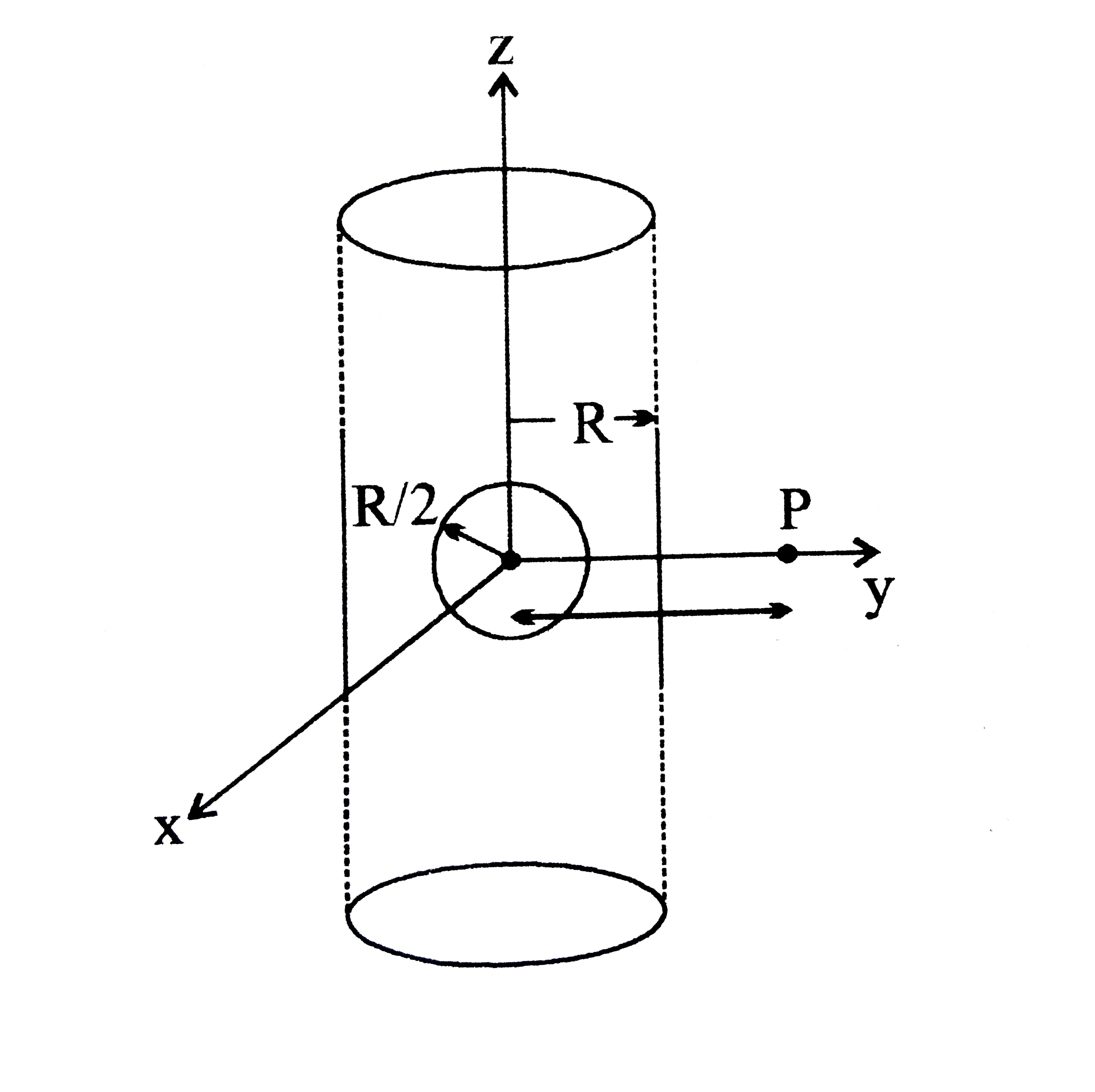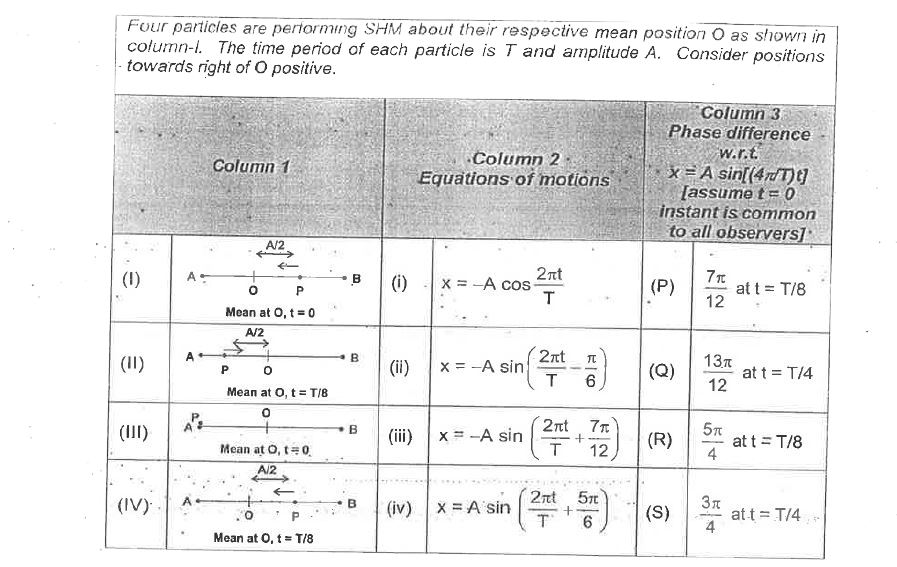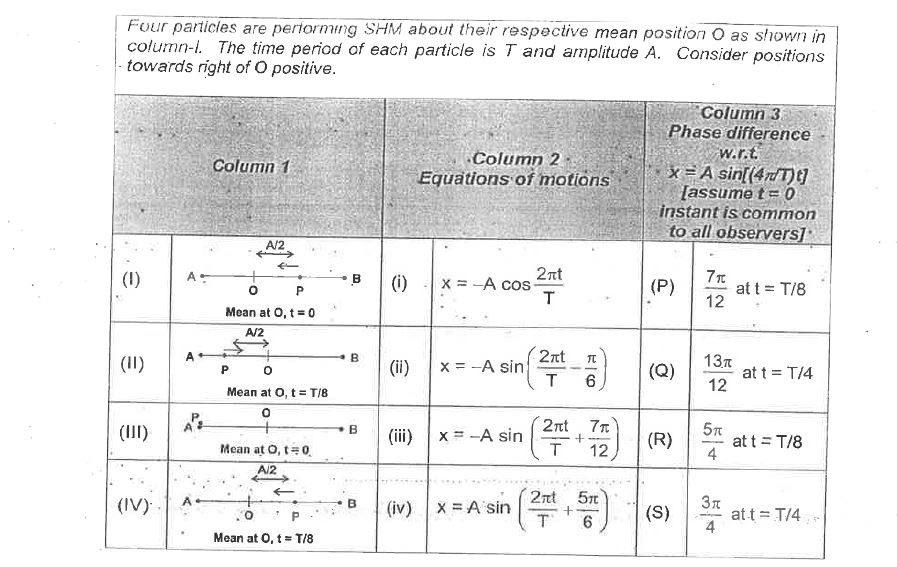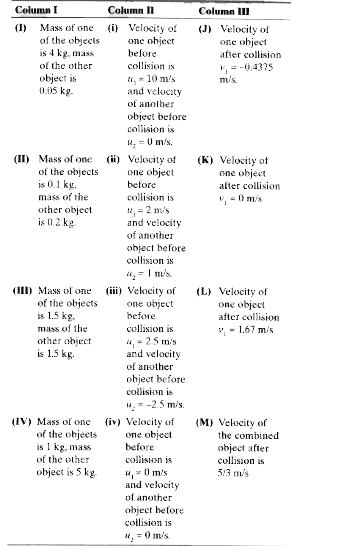Directions for Questions 56 and 57: In each question, there is a table having 3 columns and 4 rows. Based on the table, there are 3 questions. Each question has 4 options (a), (b), (c) and (d), ONLY ONE of these four options is correct.
Two charges of opposite sign and equal magnitude Q = 2.0 C are held 2.0 m apart. And there is a point Pat 4.0 cm from +Q charge. In the given table there are four values each of electric field (Column I), potential difference each of electric field (Column I), potential difference
{:("Column I","Column II", "Column III"),((I) E=1.27 xx 10^(9) V//m,(i) V=1.5 xx 10^(9) V,(J) (##MST_AG_JEE_MA_PHY_V02_C24_E03_060_Q01.png" width="80%">
The combination for maximum electric potential is
(I) (ii) (M)
(III) (iv) (K)
(IV) (iii) (J)
(II) (i) (L)
The correct Answer is:A, B
Topper's Solved these Questions
- ELECTRIC POTENTIALBOOK - RESNICK AND HALLIDAYCHAPTER - ELECTRIC POTENTIALEXERCISE - (PRACTICE QUESTIONS) Integer Type
1 Videos
- ELECTRIC POTENTIALBOOK - RESNICK AND HALLIDAYCHAPTER - ELECTRIC POTENTIALEXERCISE - (PRACTICE QUESTIONS) Linked Comprehension
2 Videos
- ELECTRIC CHARGES AND FIELDSBOOK - RESNICK AND HALLIDAYCHAPTER - ELECTRIC CHARGES AND FIELDSEXERCISE - Practice Questions (Integer Type )
3 Videos
- ELECTROMAGNETIC INDUCTIONBOOK - RESNICK AND HALLIDAYCHAPTER - ELECTROMAGNETIC INDUCTIONEXERCISE - PRACTICE QUESTIONS (Integer Type)
14 Videos
Similar Questions
An infinitely long solid cylinder of radius R has a uniform volume charge density ρ. It has a spherical cavity of radius R/2 with its centre on the axis of cylinder, as shown in the figure. The magnitude of the electric field at the point P, which is at a distance 2R form the axis of the cylinder, is given by the expression 23rR16ke0 . The value of k is .
 .
.
View SolutionParagraph for Questions 53 and 54: An isolated system consists of two conducting spheres A and B. Sphere A has five times the radius of sphere B. Initially, the spheres are given equal amounts of positive charge and are isolated from each other. The two spheres are then connected by a conducting wire.
Note: The potential of a sphere of radius R that carries a charge Q is V=kQ/R, if the potential at infinity is zero.
Which one of the following statements is true after the spheres are connected by the wire?
View SolutionA point charge q=1C and mass 1kg is projected with speed 10m/s in the perpendicular direction of unifrom electric field E=100V/m. The value of latus rectum of the path followed by charged particle (in meter) is :
View SolutionA straight conductor 1 m long moves at right angle to both its length and a uniform magnetic field. If the speed of conductor is 2.0 m/s and strength of magnetic field is 104 G, find the value of induced emf in volts.
View SolutionThe following table has 3 columns and 4 rows. Based on table, there are three questions. Each question has four options (A), (B), (C ), and (D). Only one of these four options is correct.

Pick the correct combination
View SolutionThe following table has 3 columns and 4 rows. Based on table, there are three questions. Each question has four options (A), (B), (C ), and (D). Only one of these four options is correct.

Pick the correct combination
View SolutionThe following table has 3 columns and 4 rows. Based on table, there are three questions. Each question has four options (A), (B), (C ), and (D). Only one of these four options is correct. Pick the correct combination
View SolutionThe following table has 3 columns and 4 rows. Based on table there are THREE questions. Each question has FOUR options (A) , (B) , ( C) and (D) . ONLY ONE of these four options is correct Pick the correct combination .
View SolutionThe following table has 3 columns and 4 rows. Based on table there are THREE questions. Each question has FOUR options (A) , (B) , ( C) and (D) . ONLY ONE of these four options is correct
View SolutionThe following tables has 3 columns and 4 rows. Based on each table, there are THREE questions. Each question has FOUR options (A), (B), (C), and (D). ONLY ONE of these four options is correct
QPick the correct option

View SolutionThe following tables has 3 columns and 4 rows. Based on each table, there are THREE questions. Each question has FOUR options (A), (B), (C), and (D). ONLY ONE of these four options is correct Q
View SolutionThe following tables has 3 columns and 4 rows. Based on each table, there are THREE questions. Each question has FOUR options (A), (B), (C), and (D). ONLY ONE of these four options is correct Q
View SolutionDirections for Questions 56 and 57: In each question, there is a table having 3 columns and 4 rows. Based on the table, there are 3 questions. Each question has 4 options (a), (b), (c) and (d), ONLY ONE of these four options is correct. Two charges of opposite sign and equal magnitude Q = 2.0 C are held 2.0 m apart. And there is a point Pat 4.0 cm from +Q charge. In the given table there are four values each of electric field (Column I), potential difference each of electric field (Column I), potential difference {:("Column I","Column II", "Column III"),((I) E=1.27 xx 10^(9) V//m,(i) V=1.5 xx 10^(9) V,(J) (##MST_AG_JEE_MA_PHY_V02_C24_E03_059_Q01.png" width="80%"> The combination for maximum electric field is
View SolutionDirections for Questions 56 and 57: In each question, there is a table having 3 columns and 4 rows. Based on the table, there are 3 questions. Each question has 4 options (a), (b), (c) and (d), ONLY ONE of these four options is correct. Two charges of opposite sign and equal magnitude Q = 2.0 C are held 2.0 m apart. And there is a point Pat 4.0 cm from +Q charge. In the given table there are four values each of electric field (Column I), potential difference each of electric field (Column I), potential difference {:("Column I","Column II", "Column III"),((I) E=1.27 xx 10^(9) V//m,(i) V=1.5 xx 10^(9) V,(J) (##MST_AG_JEE_MA_PHY_V02_C24_E03_061_Q01.png" width="80%"> (3) The combination for minimum electric potential is
View SolutionIn each question, there is a table having 3 columns and 4 rows. Based on the table, there are 3 questions. Each question has 4 options (a), (b), ( c ) and (d), ONLY ONE of these four options in correct.

In which condition is the velocity of one of the objects after collision 35 m/s ?
View Solution
